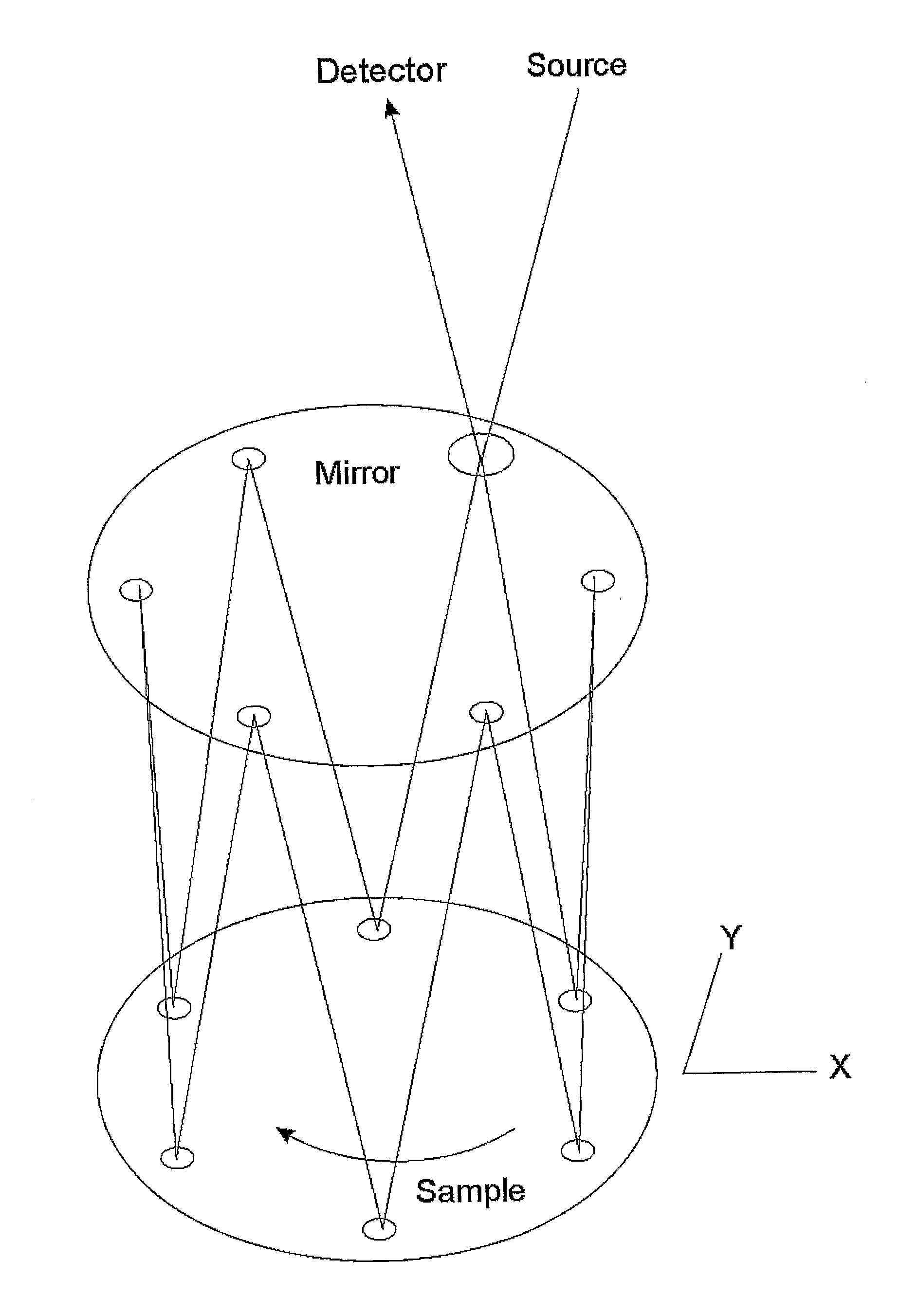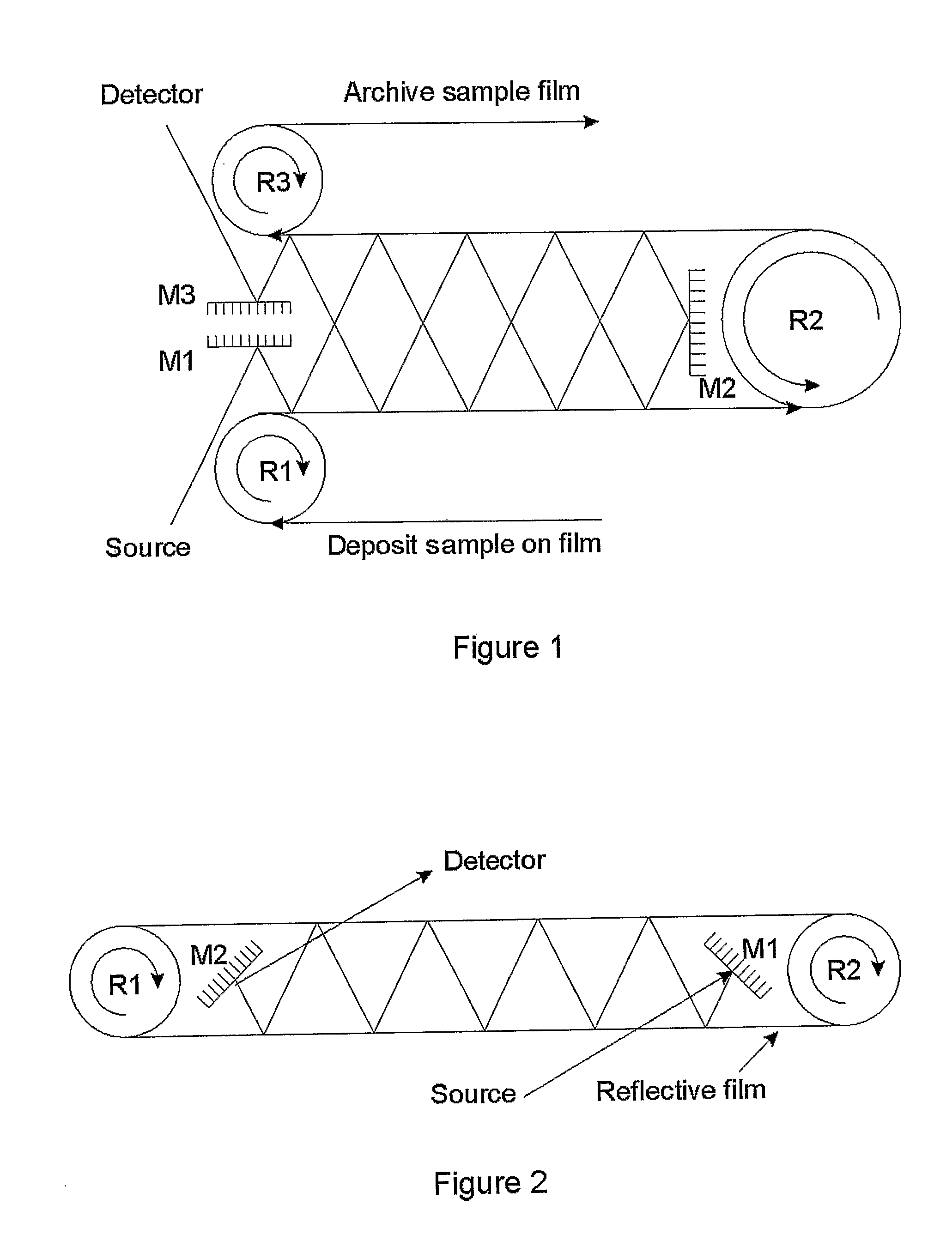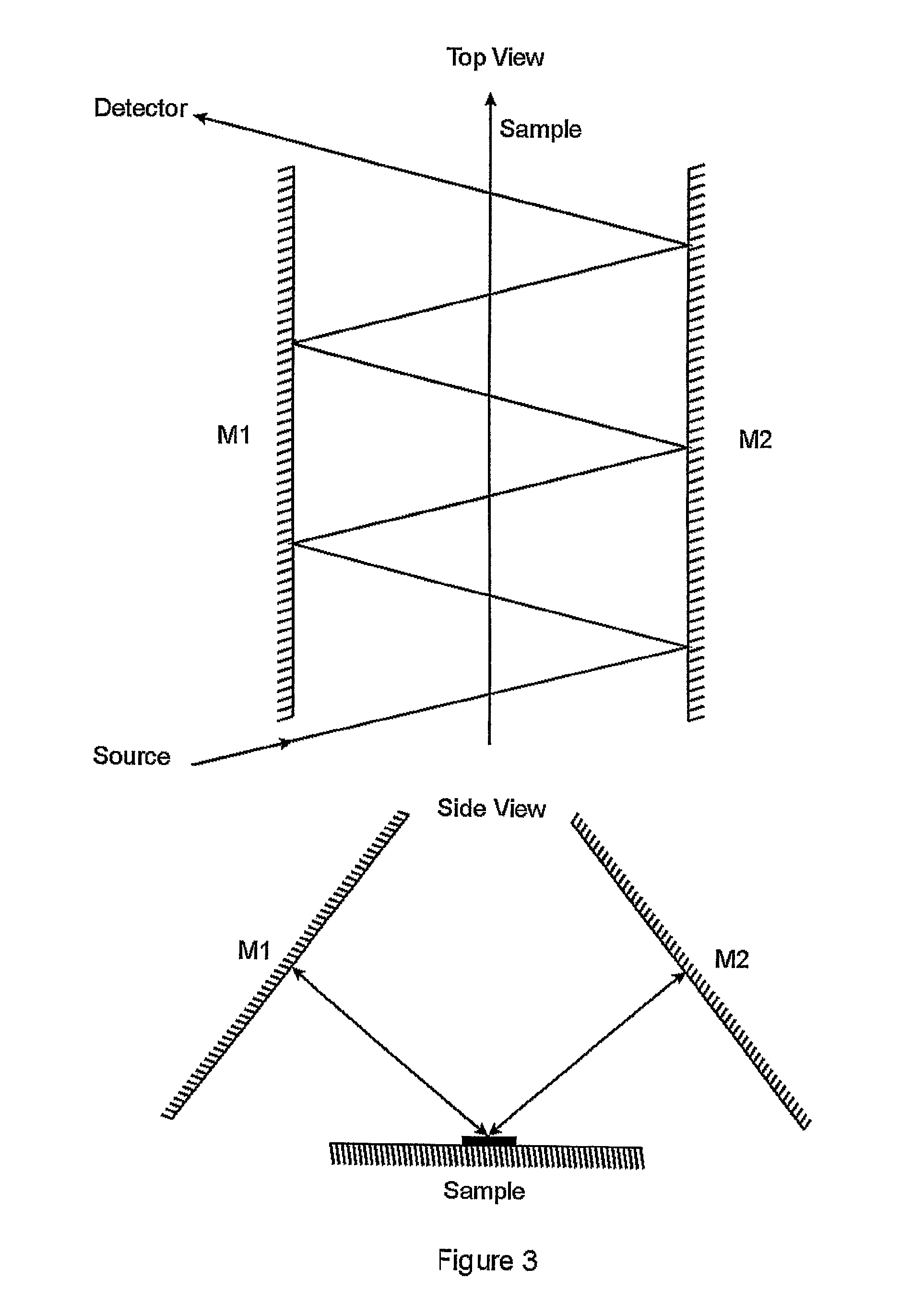Multiple pass imaging spectroscopy
a multi-pass imaging and spectroscopy technology, applied in the field of multi-pass imaging spectroscopy, can solve the problem of design being unworkable for multiple passes through a sampl
- Summary
- Abstract
- Description
- Claims
- Application Information
AI Technical Summary
Benefits of technology
Problems solved by technology
Method used
Image
Examples
case b
Standard External Reflectance Experiment
Class I
[0037]As in Case A, except that the ray reaching the detector has three components. Each component can be represented by a separate equation. The first component is specular reflectance from the top surface of the sample. The second component is diffuse reflectance consisting of rays scattered and absorbed several times in the sample bulk. Diffuse reflectance is measured by focussing off-specular rays at the detector. The third component, reflection-absorption, is transmitted through the sample suffering absorption as it passes through the sample. This ray reflects off a substrate, and passes through the sample again suffering absorption on the way to the detector. Because the rays pass through the sample twice, the coefficients of the C matrix are 2.0. The relative importance of each component depends upon the sample and experimental conditions.
Case C Standard Internal Reflectance Experiment
Class II
[0038]There are many sample segments ...
PUM
| Property | Measurement | Unit |
|---|---|---|
| angle of incidence | aaaaa | aaaaa |
| pressure | aaaaa | aaaaa |
| pressure | aaaaa | aaaaa |
Abstract
Description
Claims
Application Information
 Login to View More
Login to View More - R&D
- Intellectual Property
- Life Sciences
- Materials
- Tech Scout
- Unparalleled Data Quality
- Higher Quality Content
- 60% Fewer Hallucinations
Browse by: Latest US Patents, China's latest patents, Technical Efficacy Thesaurus, Application Domain, Technology Topic, Popular Technical Reports.
© 2025 PatSnap. All rights reserved.Legal|Privacy policy|Modern Slavery Act Transparency Statement|Sitemap|About US| Contact US: help@patsnap.com



